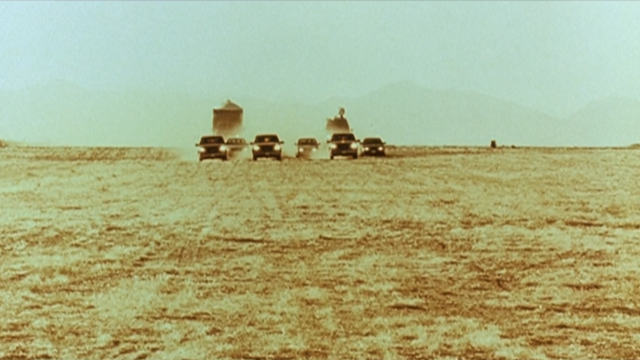Following the career kickstart of Out of Sight, Steven Soderbergh’s 2000 Traffic functions as a companion piece to Erin Brockovich (same year) and as an expansion of his ambition and talent. Brockovich was an exceptionally well-made Movie of the Week, taking a true story and giving it a standard Arc of Overcoming, and Soderbergh polished the material and got some facets to gleam brilliantly–the settings, the edits, the performances from Julia Roberts, Albert Finney, and Marg Helgenberger. Good as it is, though, it’s still a film a lot of directors could have made. With Traffic, he took a true-life situation (the War on Drugs, late 1990s) and an excellent British miniseries as sources, and created something truly unique and Soderberghian, and picked up an Academy Award for directing too.
Compressing a six-hour miniseries into a big-budget feature film was only the first of the challenges that Soderbergh never seems to tire of giving himself. The miniseries has three intertwined stories, and screenwriter Stephen Gaghan (who took Best Adapted Screenplay) adapted one and a half of them into the movie. Soderbergh (unlike Brockovich, he shot this one himself under his usual nom de camera Peter Andrews) brought a distinct look to each story: cold blues for a Cincinnati judge (Michael Douglas) who becomes America’s new drug czar while his daughter (Erika Christensen) falls into addiction; blown-out lighting (he used Vittorio Storaro’s technique of briefly exposing the film negative to light) for the San Diego story of the wife (Catherine Zeta-Jones) of a drug dealer rising to power; and harsh gritty light for the story of a Mexican cop (Benicio del Toro, another Oscar winner for this) pursuing a cartel leader. A lot of people have tried to imitate that last look and they keep screwing it up, because it’s not done by adding a yellow filter but by leaving off the color-correcting lens. The visuals keep us oriented, but also add a layer of meaning: del Toro’s story is one of corruption, Douglas’ story is one of sterility.
The scale of this film was like nothing Soderbergh had ever done before, and he only exceeded it with Che: dozens of speaking roles, use of real-life sets (the El Paso Border Patrol station) and actors (Senators and Representatives at a Georgetown cocktail party), and multiple stories and characters twining with the three main ones: Clifton Collins Jr. as an assassin, Topher Grace as a drug-dealing and -using student, Luis Guzman and Don Cheadle as DEA agents, Miguel Ferrer (God fucking dammit) as a drug mule, Benjamin Bratt as a cartel boss, a sleazetacular Dennis Quaid as a lawyer, Stephen Bauer (anticipating his role in Breaking Bad) as Zeta-Jones’ husband, on and on and on. What makes it work isn’t just the high level of craft that Soderbergh brings here, but the unusual choices he keeps making–how he shoots planes, explosions, people sitting in rooms, how he integrates news reports (something he openly lifts from The Battle of Algiers), how he simply watches people thinking, how relentlessly he edits the story down (the film comes in under two and a half hours and there are over an hour of deleted scenes), Cliff Martinez’ beautiful ambient score (which will come back for The Knick)–and how all of them create a unified whole. (Stephen Mirrone got Traffic‘s fourth Oscar for editing.) That’s a good definition of art; Soderbergh creates something as powerful with this as Michael Mann did with The Insider the year before.
Traffic streams free on Amazon Prime.


